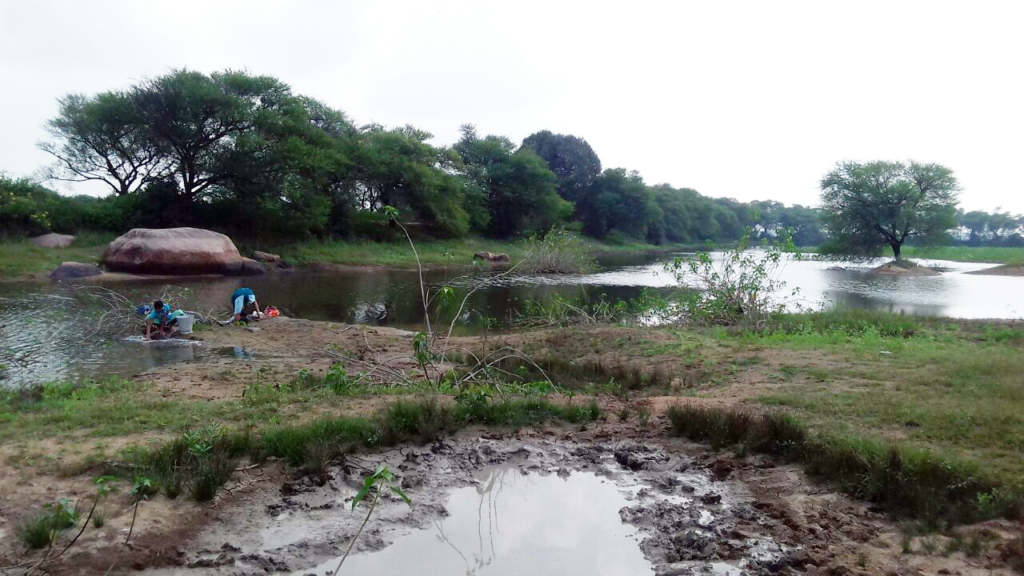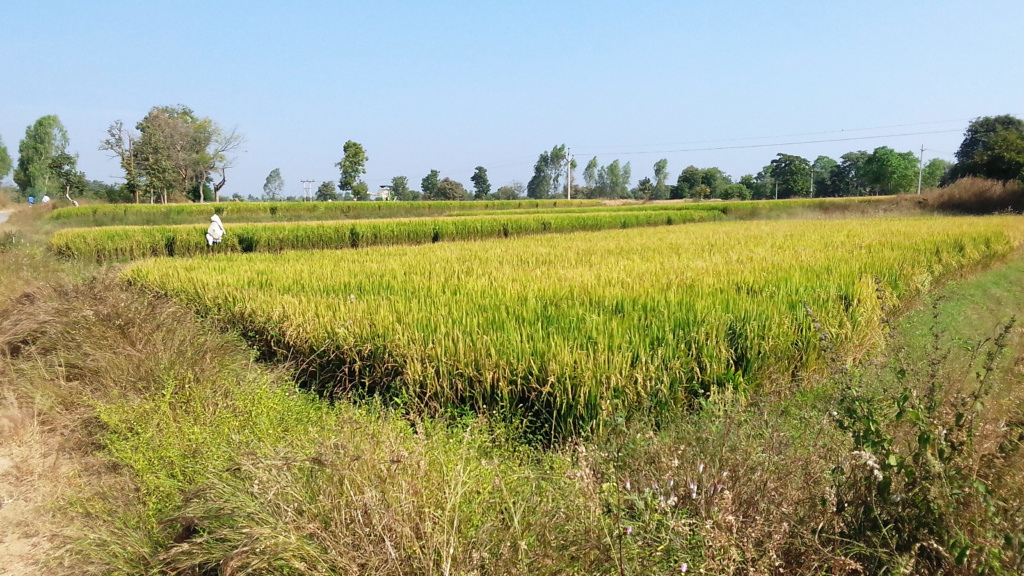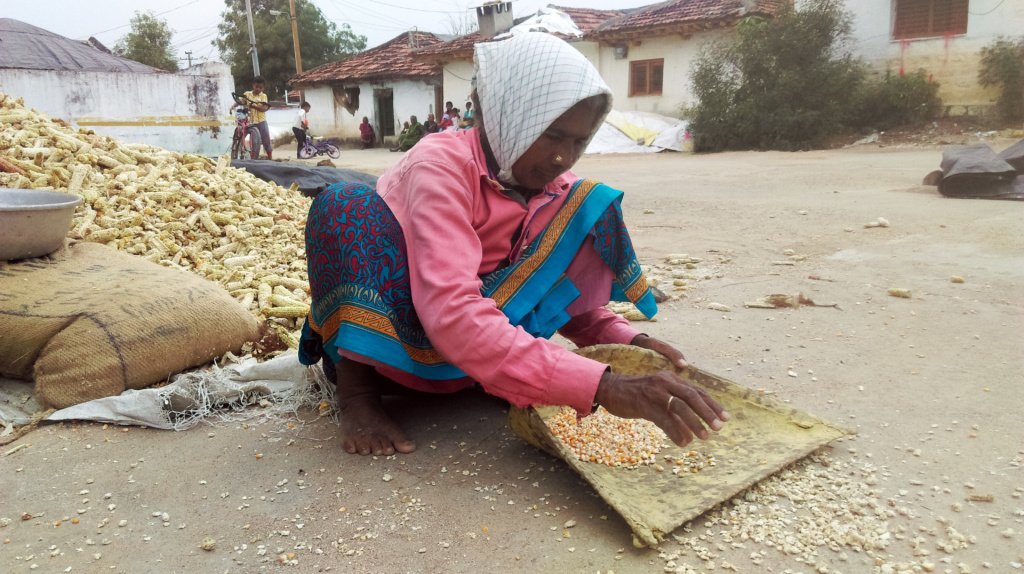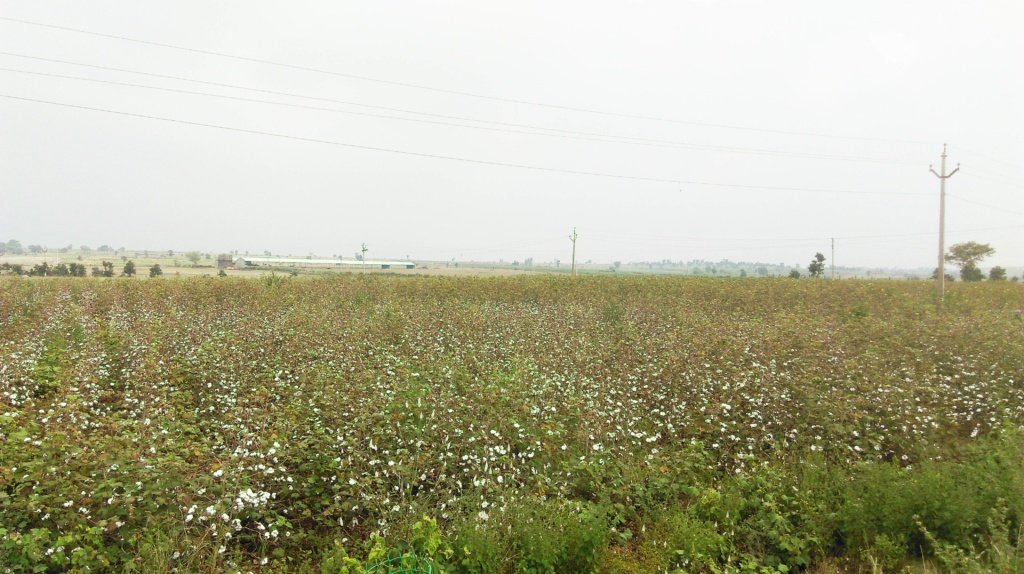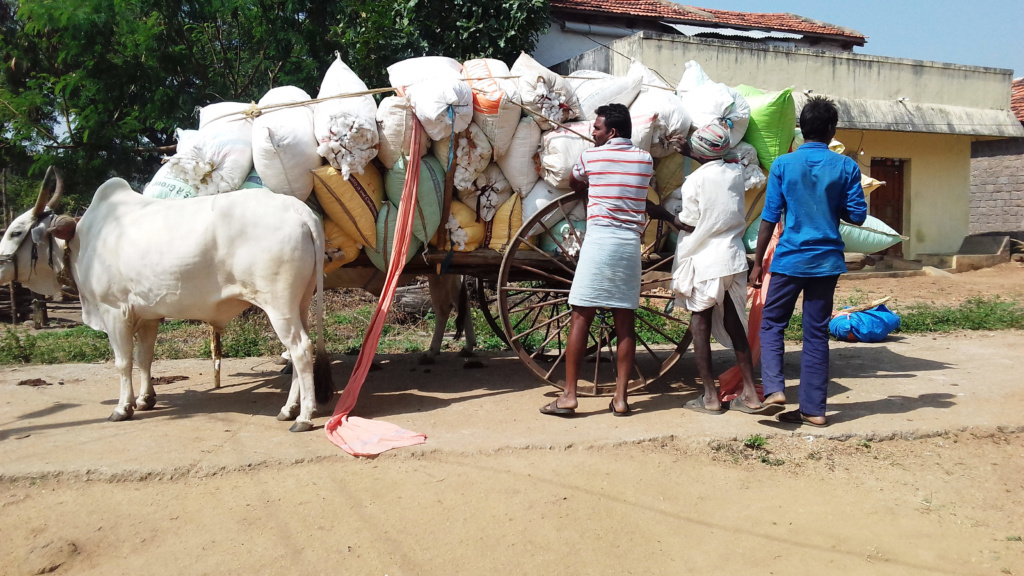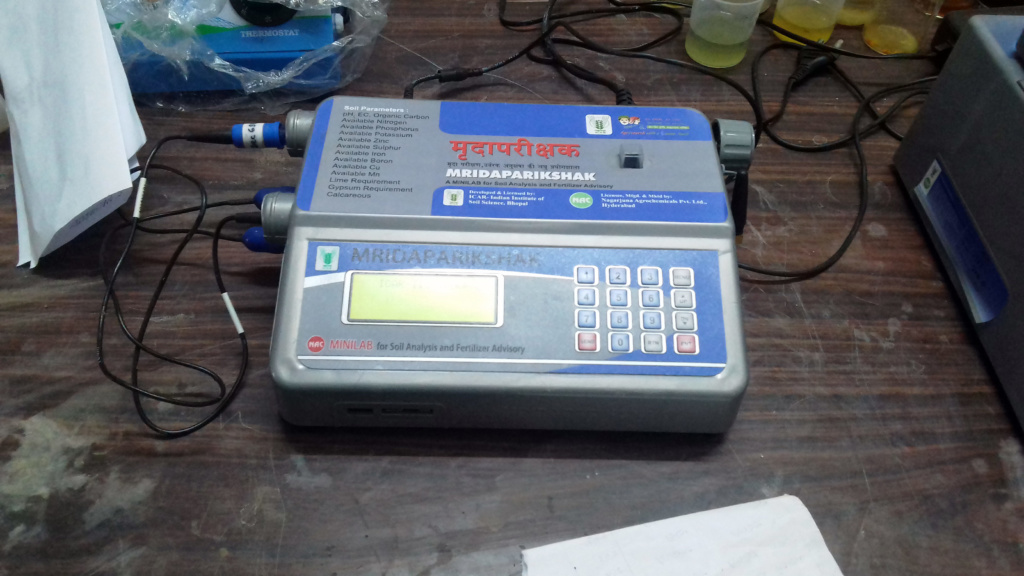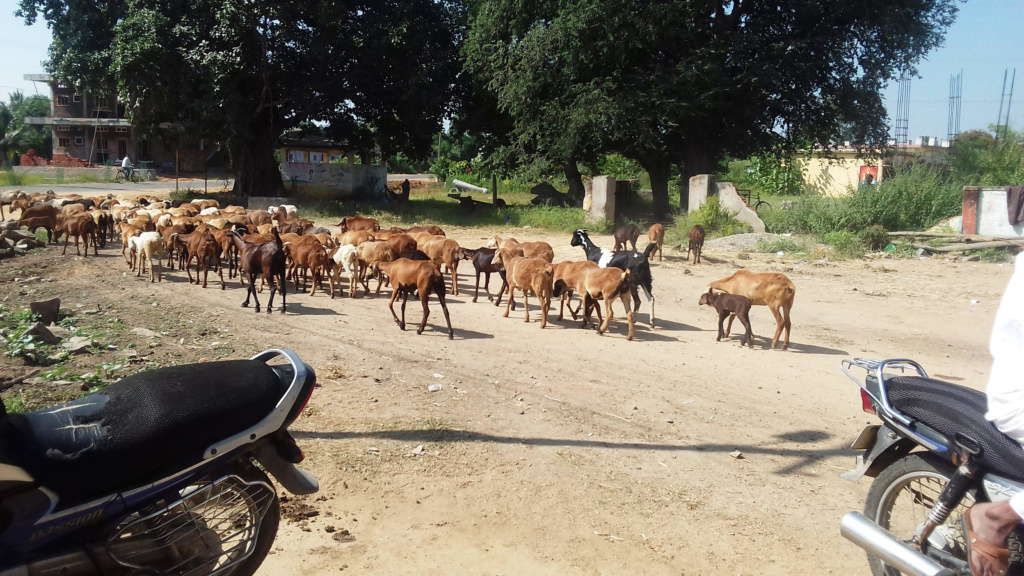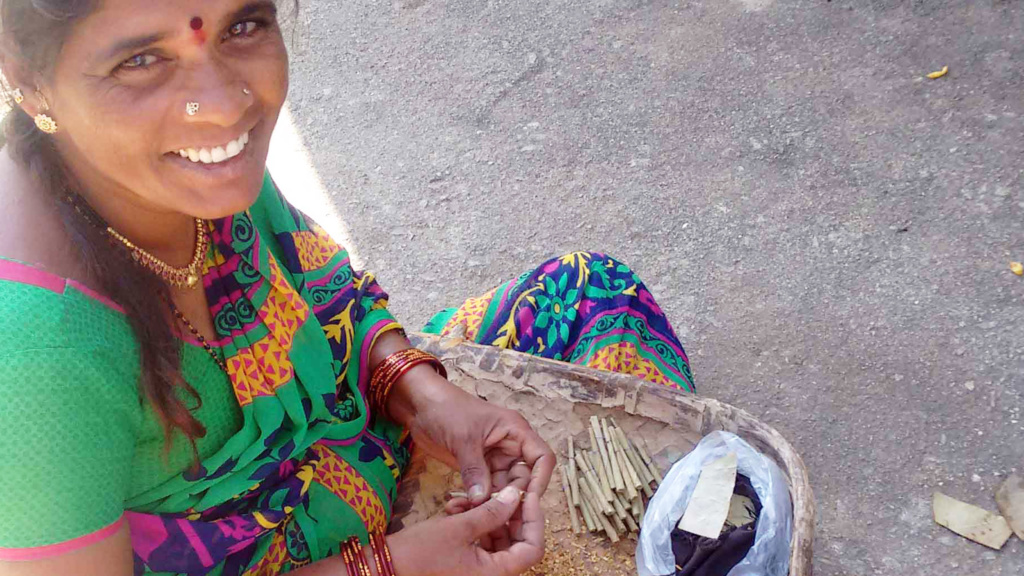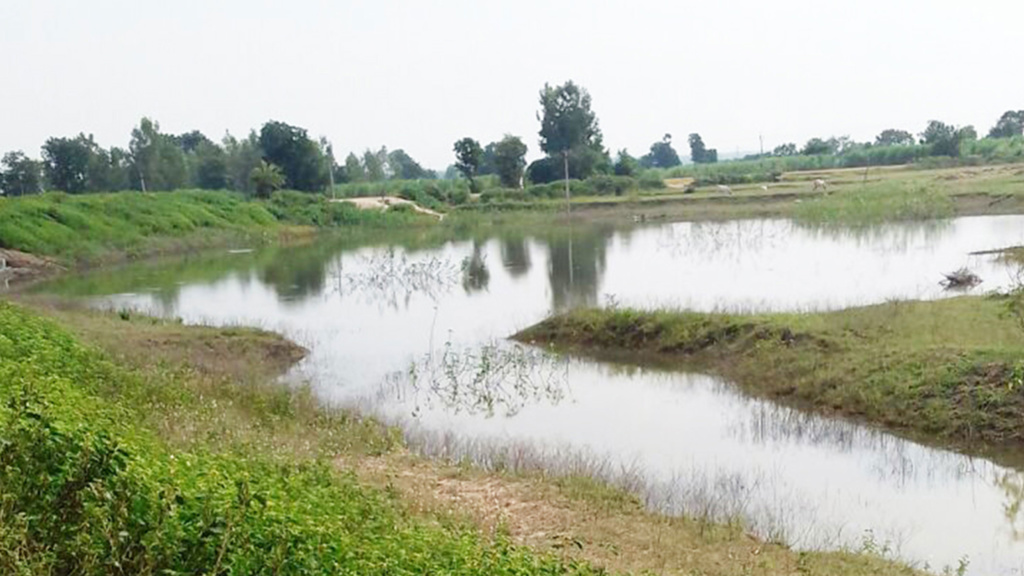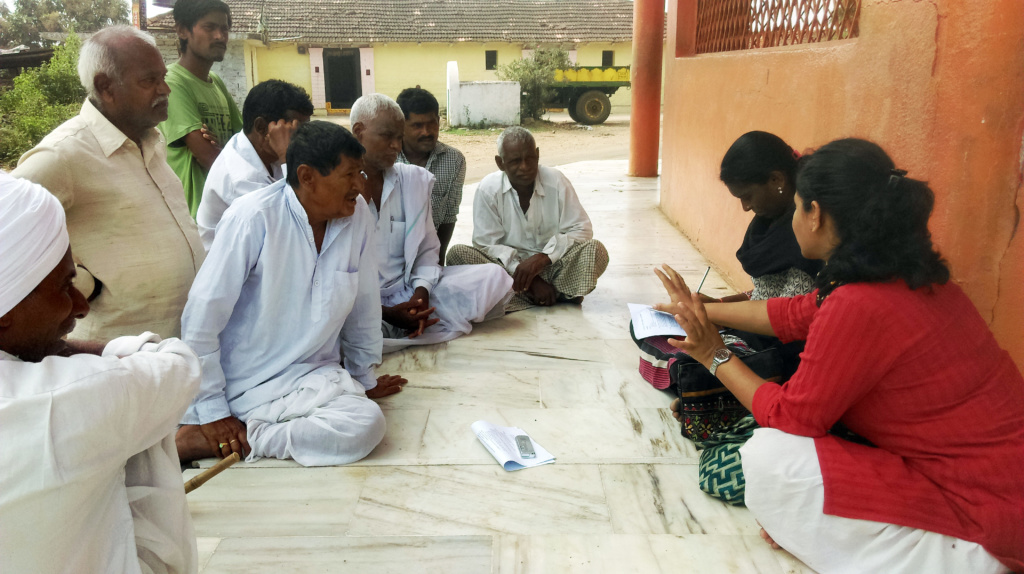A village tank with siltation (Lingupally village): Tanks form a major source of water in the rural landscape in Kamareddy. It plays a role in irrigation, water needs for livestock, as well as domestic water based activities. Siltation in tanks and lower bunds reduce their ability to hold rain water for long periods as a result of which water dries out in a few months unable to hold water for a drought period in the coming year.
Contour trenching for paddy cropping: Paddy is a major crop in the red soil areas of Kamareddy. Farmers who can afford to access groundwater prefer to grow paddy as it is relatively resilient to untimely rainfall, short sudden dry periods or sudden heavy rainfall, as well as soil type and therefore less risky for the farmer in general. However, since paddy is a water intensive crop farmers use contour trenches to use water efficiently.
Maize cropping: In the red soil areas maize is another major crop for farmers who have lower access to irrigation as it is a less water intensive crop than paddy. It offers farmers some resilience in dry periods and livelihood in the face of water scarcity.
Cotton farming in Tadwai mandal: In the black soil areas of Telangana cotton is the primary crop. Black soils can hold water for long periods and therefore need much lesser irrigation than red soils. Also cotton grows well in dry periods as moisture can reduce the quality of cotton significantly earning very low prices. In a drought period cotton provides farmers in black soil areas significant livelihood resilience.
Transporting cotton produce for procurement: Government procurement centres are highly concentrated in very few and distant pockets of the district close to cotton mills. Transporting to such long distances farmers risk lowering of quality of the cotton at very high transportation costs. For procurement thus farmers primarily have to depend on private agencies which are nearby, but do not provide access to MSP.
Soil testing kit: Soil type and condition is critical for choice of crop in this region. Despite a farmer’s preference for a less water intensive crop to cope with water scarcity, the soil condition may not allow for such a crop. Soil testing and soil health cards can enable choice of cropping in accordance with the soil condition of one’s land. Government of Telangana has significantly focussed on soil health in its agriculture policy.
Dried and saved maize produce for household consumption: Saving produce from a normal rainfall year for household consumption in case of drought period in the coming year, is an important practice that offers households resilience to droughts. In a drought year households heavily depend on this saved produce to meet their food requirements in lean seasons. In case there is normal rainfall in the following year this saved produce also provides seeds for cropping.
Livestock as an alternate livelihood: Livestock is an important livelihood source in Telangana. It provides livelihood resilience in drought years by selling livestock or their produce. However, at the same time it also increases vulnerability to droughts in terms of access to fodder and water resources for livestock which leads to heavy costs and time. Since women are primarily involved in rearing of livestock in the house they face the brunt of water scarcity.
Bidi making by women as a home based activity: Households based supplementary economic activities such as bidi making by women in Kamareddy offer enormous resilience to households in the face of droughts. The income gained from this activity has helped reduce the incidence of distress migration in this area.
Tank strengthened by Mission Kakatiya: Mission Kakatiya, a flagship programme of the Telangana Government, involves desiltation of dams, strengthening of bunds, promoting fisheries, toddy plantation around the bund. It has played a role in increasing the ability of the tanks to hold water for longer periods. However, the size of the tank matters in determining whether the tank can hold water for an entire season to provide water in case of a drought in the coming year.
A debate between men and women on the impacts of drought: The impacts of a drought are highly gendered given the different roles of men and women in the household with regard to water, livestock, food, and agriculture. While men discussed droughts more in terms of agriculture failure, women focussed on lack of income for basic households items (salt, detergents, utensils etc), lack of water for washing and bathing, long queues for water at standposts and tankers, cutting down on meals and prioritising children for meals. Men did not consider these aspects of drought vulnerability.
A Focussed Group Discussion with farmers in Tadwai mandal: Farmers have immense experience and knowledge about drought impacts, sensitivity of different crops to climatic fluctuations, pests, soil conditions, and irrigation access. Perception of farmers shows that more than quantum of rainfall they are found to be sensitive to timing, duration, and distribution of rainfall while making cropping decisions.

